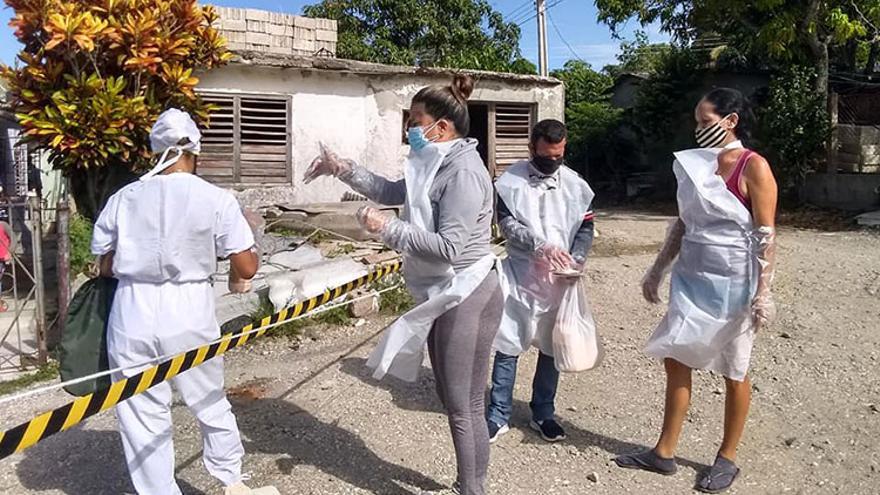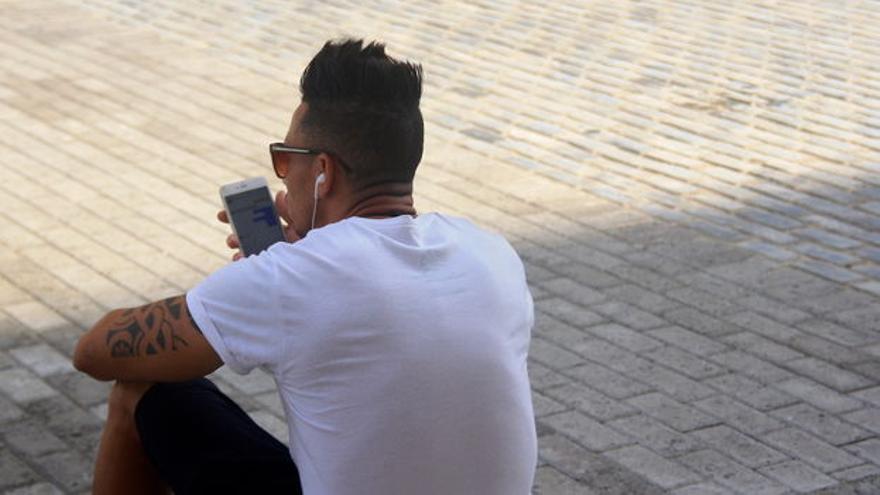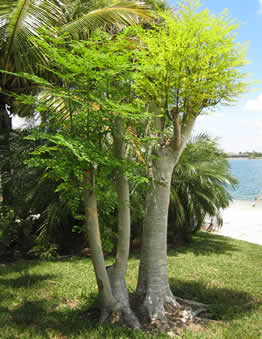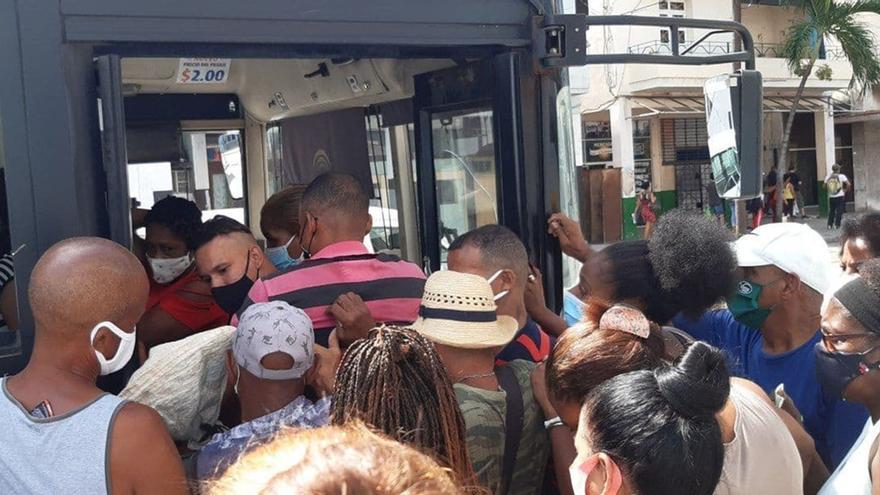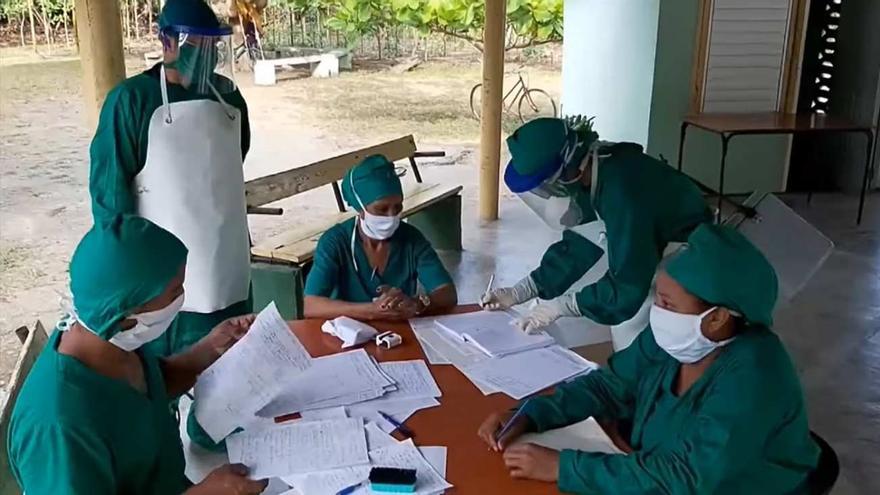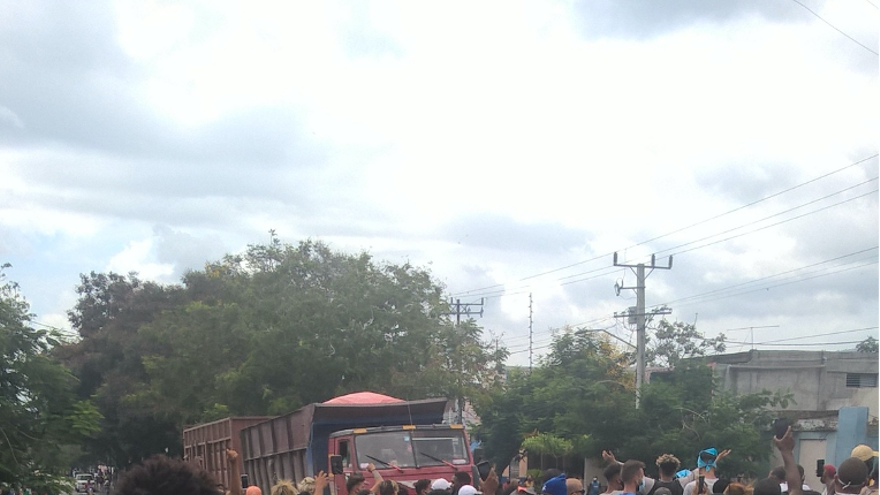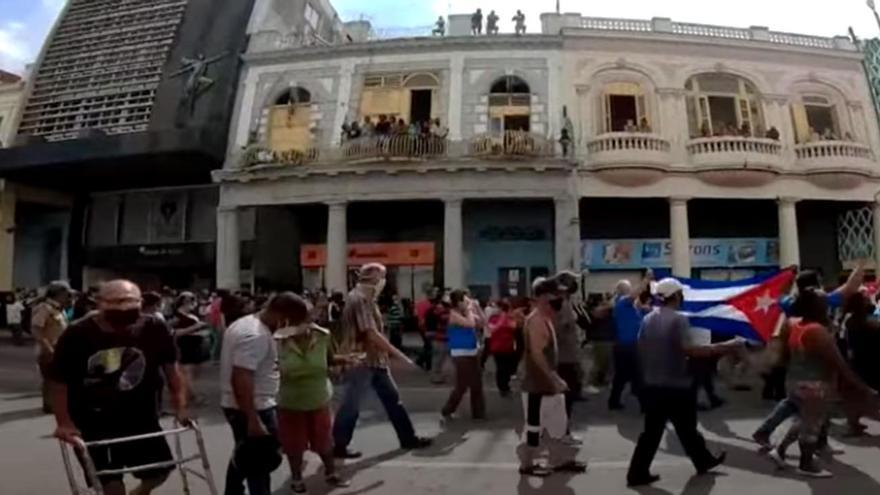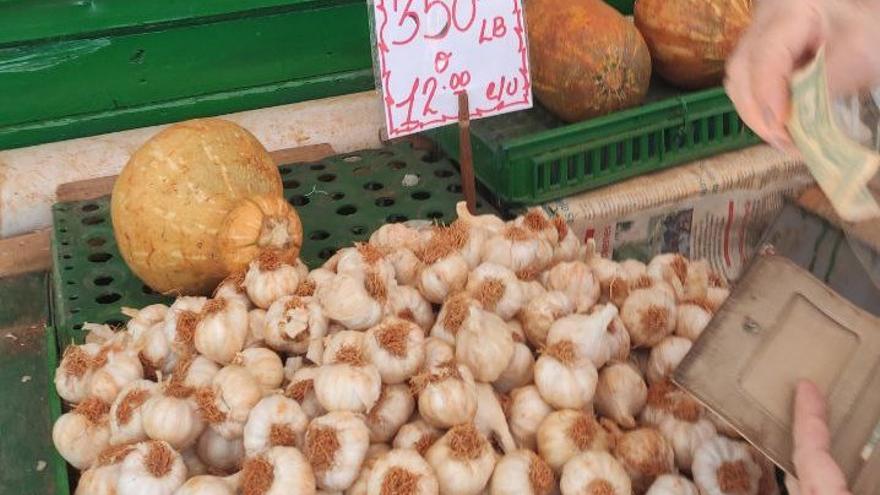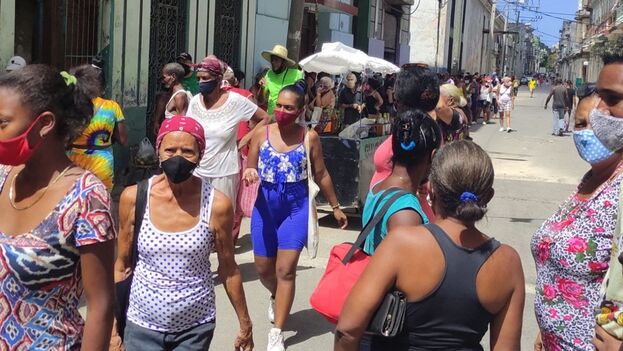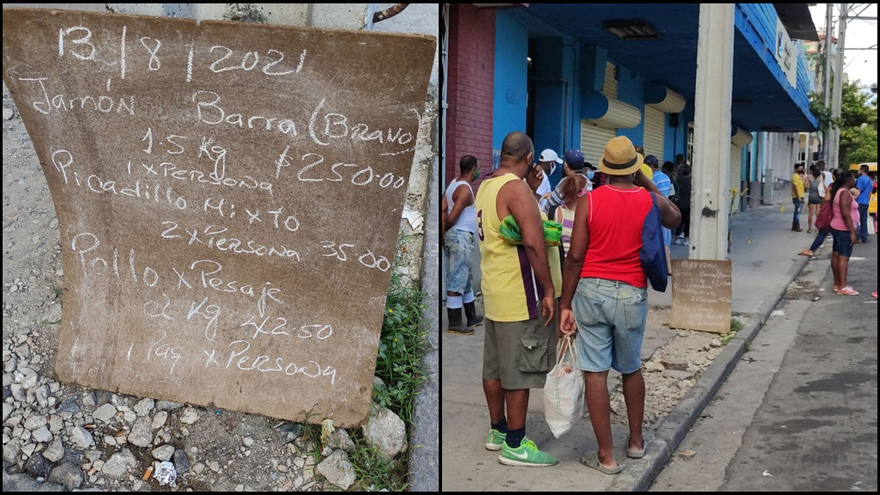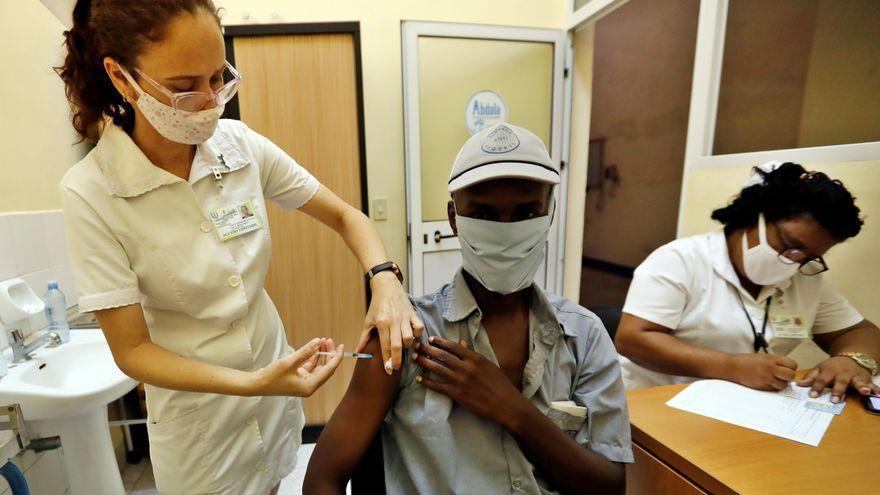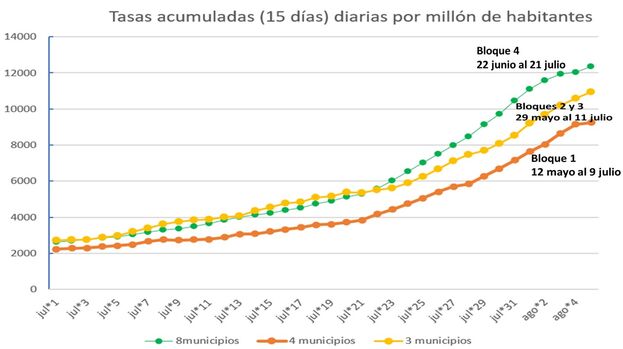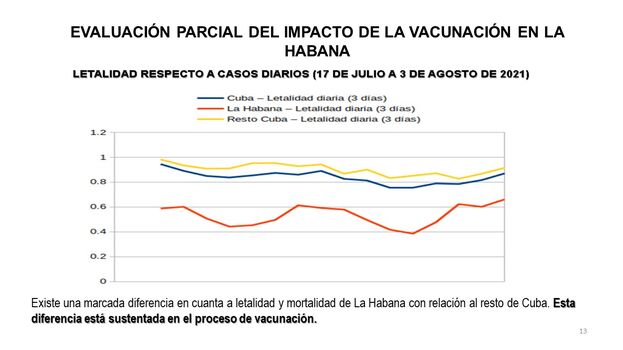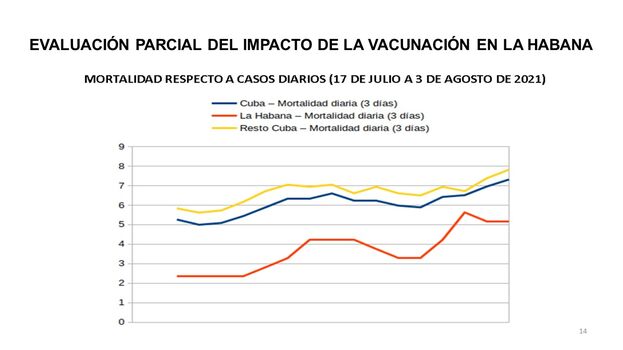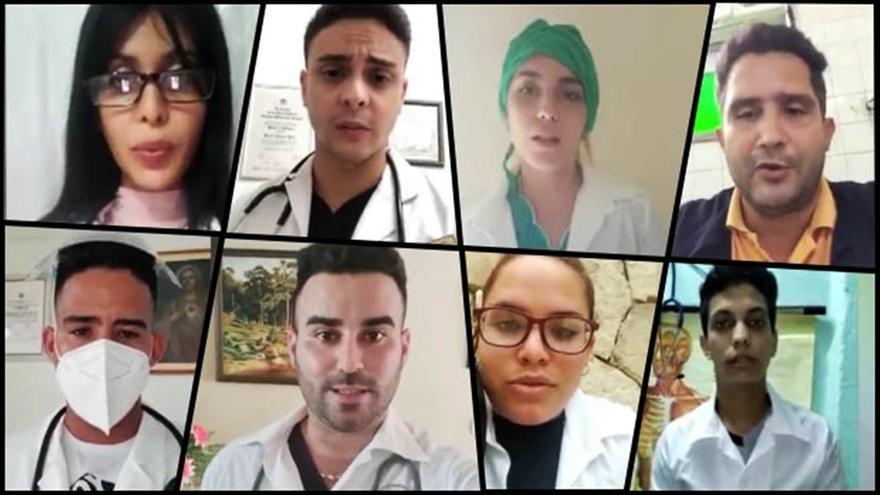
![]() 14ymedio, Havana, 15 August 2021 — More than twenty doctors have responded to Prime Minister Manuel Marrero who pointed to “abuse and neglect” as the main causes of patient complaints in Cuba. In a video released this Saturday, health workers have also denounced the poor working conditions and “the mistreatment of the leadership” that they suffer every day.
14ymedio, Havana, 15 August 2021 — More than twenty doctors have responded to Prime Minister Manuel Marrero who pointed to “abuse and neglect” as the main causes of patient complaints in Cuba. In a video released this Saturday, health workers have also denounced the poor working conditions and “the mistreatment of the leadership” that they suffer every day.
In a visit to Cienfuegos last week, Marrero assured that most of the complaints from the population about the Public Health system derive from “subjective causes” and listed “abuse, neglect” as the main causes. His words have generated a deep malaise in a sector that has been in check for more than a year due to the pandemic and the lack of resources.
As part of the response to Marrero, several personal and collective letters from health workers have circulated in recent days that point out the problems that they must overcome every day to be able to do their work in the midst of collapsed hospitals due to cases of contagion, the lack of medicines and the few protection measures they have.
“The health collapse that is being experienced at the moment is not the fault of the doctors,” says Dr. Alejandro Eduardo Forés Arafet in a video continue reading
Forés not only demands “justice” for those who are “giving everything to save lives every day in this country,” but he stands up to the authorities demanding better working conditions: “I demand means of protection, resources and supplies”, a request that has been heard from the mouths of patients for months, but for a few weeks it has also been heard publicly in the voice of medical personnel.
Along the same lines as Forés, there are several testimonies from students, recent graduates and doctors. “I want to denounce the mistreatment we receive from the leadership and the authorities. In reality, we doctors are the ones who support this country,” adds Claudia Julieth Consuegra Leyva, a third-year resident of general surgery at the same hospital.
The sequence of critical opinions about Marrero’s words marks a historical precedent in a sector that for decades has been shown to be related to government policies and as one of the crown jewels of official propaganda on the island. A few years ago, The health workers were the first to enjoy a salary increase and for decades they have accessed trips abroad through missions in other countries.
Among the complainants is also Manuel Guerra, former resident in the specialty of gynecology and obstetrics, a training that he had to abandon due to pressure from State Security due to his criticism of the Government on social networks; he currently works in the municipal hospital Nicodemus Regalado from Buenaventura, Holguín. “I publicly denounce what was said by Prime Minister Manuel Marrero,” saya the young man.
“He tried to blame the doctors for the current situation,” laments Guerra, at a time when social networks have been filled with videos in which patients and relatives show the interior of many collapsed hospitals on the island, with the corridors full of stretchers, people crying out for oxygen and healthcare workers warning of the lack of drugs to treat them.
For Marilyn Marrero Agüero, Marrero’s unfortunate statements attempting to blame the health workers and calls for “containment in the face of what our leaders say.” Along with the other colleagues who recorded the video, the young woman demands the necessary means and supplies to be able to face the pandemic.
Fearing reprisals for the statements, doctor Rafael Alejandro Fuentes Sánchez, a specialist in general surgery, comments: “I am making this video as I prepare to go out and fight for Cuba, to go out and demand respect for the medical union. We are afraid, But we are not afraid of the pandemic, we are afraid of the Government. “
The doctor adds that they fear what the authorities may do and how they will interpret “the fact that we go out to demand our full right and the right of the people to continue receiving quality medical care.”
So far, and despite the criticism that accumulates, the prime minister has not given any public response to the healthcare professionals nor has he apologized for the words said in Cienfuegos. However, the first complaints of pressure against the doctors who participated in the video have already appeared. On Sunday morning, the doctor Manuel Guerra denounced reprisals against the doctors. “I make this complaint before they disappear me,” said the doctor in a live broadcast on Facebook. Guerra explained that the students and doctors who gave their testimony for the filming had been called to meetings at their workplaces. “My colleagues are being intimidated right now,” he warned.
Este domingo, el médico Manuel Guerra denunció represalias contra los doctores que grabaron un video en respuesta a las críticas que hizo el primer ministro cubano al gremio sanitario. https://t.co/FgygJ2gq2Q pic.twitter.com/5Vo4Ma1A17
— 14ymedio (@14ymedio) August 15, 2021
____________
COLLABORATE WITH OUR WORK: The 14ymedio team is committed to practicing serious journalism that reflects Cuba’s reality in all its depth. Thank you for joining us on this long journey. We invite you to continue supporting us by becoming a member of 14ymedio now. Together we can continue transforming journalism in Cuba.


